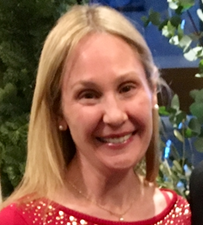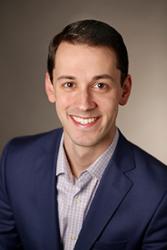Since the pandemic-induced nationwide school closings in spring 2020, educators and researchers have been tracking children’s academic progress. Now, over two years later, several key metrics paint a concerning picture. Children attending primarily in-person during the 2020-2021 school year on average lost about a quarter of an academic year of annual progress relative to measured math and reading performance pre-pandemic. Those attending primarily remotely between spring 2020 and spring 2022 lost closer to half of an academic year. Because students of color and those from lower-income households spent far more time in remote learning, it is no surprise the academic losses have been largest for these groups.
As billions of federal dollars are injected into school systems, school districts are implementing programs and interventions, and expanding on existing ones, to help support children academically. Many of these learning recovery programs, such as expanded tutoring and summer school, require engagement from parents, including awareness of programs, interest/desire to enroll a child, and active enrollment (i.e., opting in). Parents’ understanding of whether their child is struggling academically, their beliefs about the benefits of such recovery programs, and logistical considerations, such as availability of transportation, likely drive awareness of and interest in these programs.
With colleagues at the USC Dornsife Center for Economic and Social Research and the USC Rossier School of Education, we sought to learn more about parent awareness of and interest in tutoring and summer school during spring and summer 2022. Harnessing the nationally representative Understanding America Study (UAS), we asked parents from 1,483 households a series of questions about their children’s academic experiences during the spring of the 2021-2022 school year. Parents answered questions through April and May of 2022. Here’s what we found.
Despite historically high pandemic recovery funding, less than half of parents report their children’s schools offered tutoring and/or summer school
We asked parents if their child’s school was offering tutoring in spring 2022 or summer school in a few months. Overall, less than 50 percent of parents reported that their schools were indeed offering these programs, 38 percent for summer school and 43 percent for tutoring (Figure 1). These parent reports contrast school-level reports of planned spending with approximately 55 percent of schools providing summer school and 35 percent providing tutoring. In a national survey of school districts, even higher shares of districts reported offering summer programming (70 percent) and tutoring (60 percent) in response to the pandemic, which we would expect since not all schools in a district may offer these recovery interventions.
Overall parent interest in tutoring and summer school is low
To examine the level of parent “interest” in tutoring and summer school, we combined the group of parents whose children were participating with the group who reported their child would participate if the school did offer them. We believe this is likely an underestimate of parent interest.[1] As shown in Figure 1, less than one quarter (23 percent) of parents were interested in summer school, and just over a quarter were interested in tutoring (28 percent), using this combined definition of interest in spring 2022.
These low levels of parent interest in learning recovery supports like tutoring and summer school have been reported on elsewhere, with speculation that both educators and parents may not understand the extent of pandemic learning loss and that parents may simply be burned out after years of increased pandemic demands on them and their families. This disconnect is worrisome to education decision makers because of the opt-in nature of many pandemic recovery programs: even if well-funded, such programs are unlikely to reverse much pandemic learning loss if interest and uptake among parents is low.
Parents of children doing pretty well academically are driving low parent interest
Most parents report that their children are doing well in school: about 90 percent of parents in our sample reported that their student earns mostly Bs or higher. Assuming these parent reports are accurate, the large majority of students in our sample are currently succeeding academically. Only about one fifth (19-23 percent) of parents whose children are succeeding academically indicated that their child does or would participate in summer school or tutoring (Figure 2). Therefore, alarming reports of low parental interest in academic recovery interventions may simply reflect that the majority of students are currently finding academic success, so their parents do not believe they need high-intensity, potentially high-cost academic interventions like summer school and tutoring. (Of course, there are arguments that grades assigned during the pandemic are not good indicators of student success, which is a distinct problem for school systems to grapple with. Recent course grades are also imperfect indicators for identifying students that fell behind academically during the pandemic.)
Learning support uptake is low, even among academically struggling students
For the subset of parents whose children are struggling academically, actual and hypothetical participation in academic recovery programs is higher but not nearly as high as we would hope given the extent of learning loss that occurred over the 2020-2021 and 2021-2022 school years. At schools that do not offer summer school and tutoring, 45 percent and 60 percent of parents (respectively) report that their academically struggling child would participate if offered (Figure 2). Reports of actual participation among parents of students earning Cs or lower, which are likely better indicators of real-world uptake, are even lower, with 39 percent of parents reporting that their child is participating in summer school and 36 percent reporting the same for tutoring. This means that large shares of parents whose children would benefit the most from summer school or tutoring may choose not to participate in programs like these if they were offered again in future terms.
Educators and policymakers need to take action to support students
These findings portend low uptake of tutoring and summer school among those students who need such interventions most, which should worry school, district, and state policymakers. It is essential to promote uptake of high-intensity academic recovery programs among academically struggling students if the programs are to meaningfully address pandemic learning loss, and our data suggest that many parents may choose not to enroll their children in commonly offered programs like summer school and tutoring. Our data do not point to mechanisms driving this relatively low interest, but it is imperative that states, districts, and schools work to understand the disconnect between offered programs and parent awareness and interest. And they need to do this quickly, as the first round of federal pandemic recovery funding expires next month, and the most recent round expires in just two years.
We encourage states, districts, and schools to issue clear communication about the urgency of pandemic learning loss to both educators and parents and work to ensure that parents are aware of the academic recovery options available to them. Further, schools and districts could survey parents or convene parent focus groups to better understand other potential drivers of low uptake of academic recovery programs, such as pandemic-driven economic hardship, transportation or scheduling problems, or exhaustion. Based on learnings from outreach efforts, schools and districts would be positioned to act in ways that limit the barriers to increase students’ participation in these programs. For example, if scheduling were found to be a major barrier, school leaders might adapt school schedules to accommodate tutoring sessions during the school day instead of before or after school.
We must provide learning recovery options that are feasible for parents and communicate their existence and importance to parents clearly. Districts only have through 2024 to spend the biggest influx of federal education funds in history, and now is the time to ensure that children’s needs are met.
Footnotes:
1. Our measure of interest likely under-represents true interest to some degree, as we did not ask parents who reported their child’s school offered the program, and if their child was not participating in the program, whether they wanted their child to participate.
-
Acknowledgements and disclosures
We gratefully acknowledge financial support from the National Science Foundation Grants No.2037179, 2120194, and 2214168 , and the Hewlett Foundation. Any opinions, findings, and conclusions or recommendations expressed in this material are those of the authors and do not necessarily reflect the views of the funding organizations. We are also grateful to Amie Rapaport, Marshall Garland, Michael Fienberg, and the UAS administration team for their contributions to this work.









Commentary
Low parent interest in COVID-recovery interventions should worry educators and policymakers alike
August 16, 2022